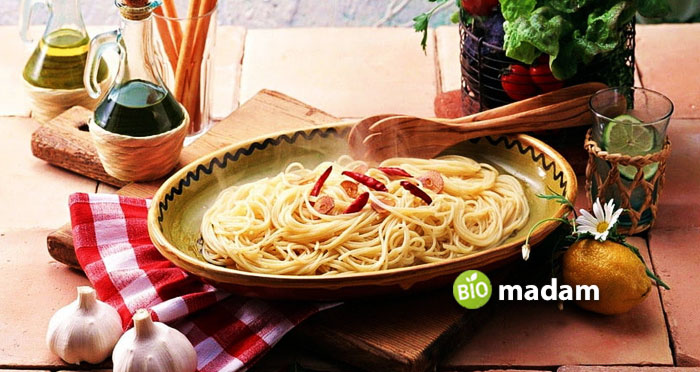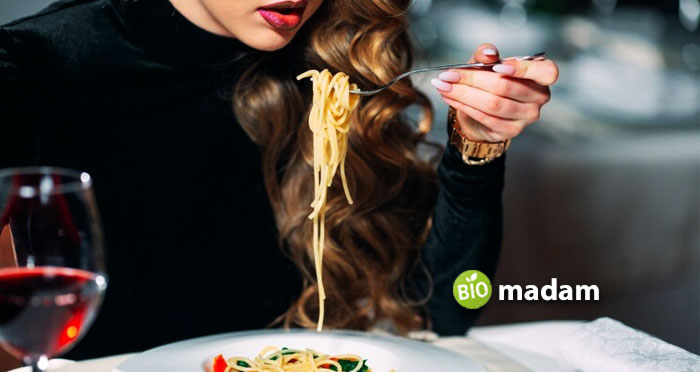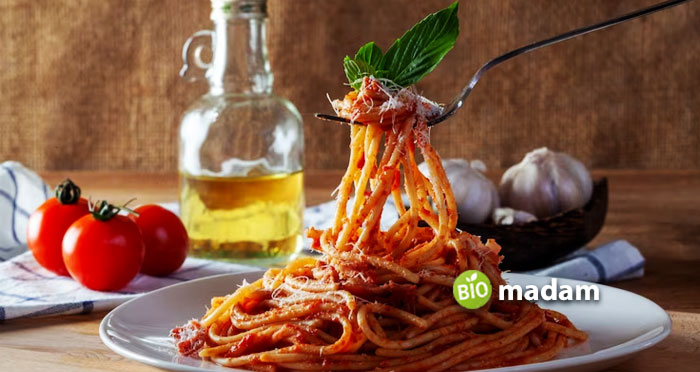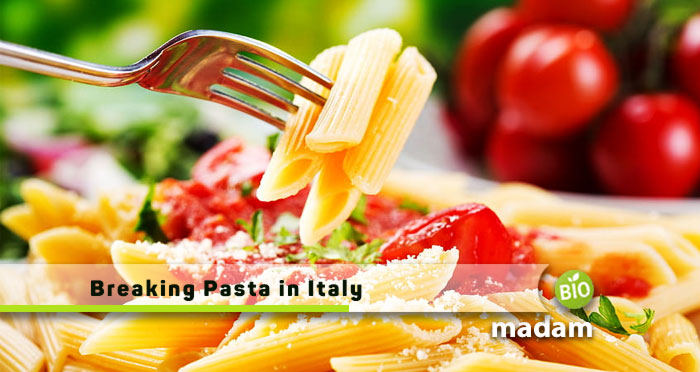Do you love pasta? Then you must know the etiquette to make and eat pasta the right way.
Pasta is an Italian food made from a dough of wheat flour and water or frozen eggs, which is then rolled out and cut into various shapes like spaghetti, macaroni, fettuccine, etc. It is a staple food in Italian cuisine and has become popular worldwide due to its versatility and ease of preparation. Pasta can be served with a variety of sauces, ranging from simple tomato sauce to rich and creamy Alfredo sauce. It is a filling and satisfying dish for people of all ages.
If you plan on visiting Italy, you must know the basic food etiquette in Italy. Italians are very particular about their pasta and have some dos and don’ts about eating food.
Here in this article, we will tell you the Italian way of making and eating pasta. So, when you have read the complete article, you will be able to travel to Italy and enjoy Italian cuisine like a pro.
Is it Actually Illegal to Break Pasta in Italy?
There is a common myth that breaking pasta in Italy is illegal and can lead to severe consequences. However, this is not true. Breaking pasta is not illegal in Italy, and there are no laws prohibiting it.
The origin of this myth is unclear, but it may have started as a result of cultural misunderstandings or misinterpretations. In Italian culture, food is highly valued, and certain rules and traditions surround its preparation and consumption. For example, Italians have specific ways of eating certain dishes, such as not adding cheese to seafood pasta or using a spoon to twirl spaghetti instead of cutting it with a knife. However, these are not laws, and breaking them is not a criminal offense.
So, technically the answer to this question is no, it is not illegal to break pasta in Italy, but it is something that one should avoid. Italians are very sensitive when it comes to pasta. They consider this act bad manners, which is against Italian food etiquette. They might get upset and will judge you for doing this, so it is better to just avoid breaking the pasta when you are in Italy.

Pasta Etiquettes in Italy
It is worth noting that Italy has certain laws and regulations regarding food and food safety. For example, Italian law requires that certain types of pasta, such as egg pasta, be made with specific ingredients and follow strict guidelines for production and packaging. Similarly, there are regulations on the labeling and marketing pasta products to ensure that they are accurately represented and safe for consumption.
Here we have mentioned the etiquette of making your pasta in the Italian way.
Italian Way to Cook Pasta
Follow these steps to make the perfect Italian pasta:
Choosing the Right Pasta: The first step to cooking pasta in Italy is to select the right pasta for the dish you make. Different types of pasta work best with different sauces and cooking methods.
Boiling the Water: Fill a large pot with enough water to cook the pasta and bring it to a rolling boil over high heat.
Adding Salt to the Water: Once the water is boiling, add salt to the water, typically a tablespoon per liter of water. It helps to flavor the pasta and prevents it from sticking together.
Adding the Pasta to the Water: Once the water is salted, add the pasta to the pot. It’s important to stir the pasta occasionally to prevent it from sticking together.
Cooking the Pasta: Cook the pasta according to the package instructions or until al dente, which means the pasta is cooked but still has a bit of firmness and bite.
Testing the Pasta for Doneness: To test the pasta for doneness, taste a piece of pasta. It should be cooked but still have a slight bite to it. If the pasta is still too firm, cook it for another minute or two.
Tips for Serving and Enjoying Pasta in Italy
You can even enhance the taste of already-made delicious pasta by topping it your way! These are by:
Using the Right Sauce: Different types of pasta are often paired with specific sauces in Italian cuisine. For example, spaghetti is usually served with tomato sauce, while fettuccine is often filled with creamy sauce.
Adding Cheese: Many pasta dishes in Italy are topped with grated cheese, such as Parmesan or Pecorino Romano.
Pairing Pasta with Wine: In Italy, pasta dishes are often paired with wine. Generally, white wines pair well with light pasta dishes, while red wines pair well with heavier pasta dishes.

Italian Way to Eat Pasta
Here are some tips on how to eat pasta the right way:
Serving Size: In Italy, pasta is typically served in small portions as a first course. It allows diners to enjoy the dish without filling it up too quickly. Eating pasta as part of a larger meal is common, with multiple courses served over several hours.
Using Utensils: Italians typically eat pasta with a fork and spoon. The spoon is used to help twirl the pasta, while the fork is used to spear individual pieces.
Twirling Pasta: When eating long pasta like spaghetti or linguine, using a spoon to twirl the pasta around the fork is common. It allows diners to enjoy the pasta without cutting it into smaller pieces.
Sauce and Cheese: In Italy, the sauce is meant to complement the pasta rather than overpower it. Pasta dishes are often topped with a light sauce, such as a tomato-based marinara or a simple olive oil and garlic sauce. Cheese is also a popular addition, with Parmesan or Pecorino Romano often grated on top.
Famous Pasta Restaurants in Italy
We have shortlisted the five best restaurants in Italy that are famous for pasta.
Agustarello a Testaccio
It is the most loved restaurant among the locals in Rome. It is known for its delicious traditional Roman cuisine, warm ambiance, and friendly service.
Is it illegal to break pasta in Agustarello a Testaccio? No, it is not illegal, you will not be sent to jail for doing so, but it is better to avoid it as it is considered bad etiquette.
Pasta e Vino
Pasta e Vino is a cozy Italian restaurant located in Rome. It offers a wide variety of authentic pasta dishes and an extensive selection of Italian wines. The restaurant is known for its casual yet elegant atmosphere, making it a popular spot for a romantic dinner or a night out with friends.

Algiubagio Restaurant
Experience Venice’s glamorous and delightful side at the Algiubagio Restaurant, providing diners with stunning views of the water and surrounding architecture. The restaurant serves a range of fresh seafood dishes, as well as traditional Venetian cuisine, all made with locally sourced ingredients.
Osteria al Casale
Osteria al Casale, situated at the center of Matera’s town, provides an ideal setting to relish a plate of spaghetti. The restaurant’s specialty is offering uncomplicated regional cuisine emphasizing seasonal produce known as “Cucina Povera.” Indulge in a dish of truffle ravioli while admiring the picturesque natural landscape of southern Italy from the outdoor patio.
While there’s no legal prohibition on breaking pasta at Osteria al Casale, it is considered impolite and should never be done!
Tamerò
Located in Milan, the restaurant offers a contemporary take on classic Italian cuisine, with an emphasis on fresh, seasonal ingredients. The chic interior design, warm ambiance, and attentive service make Tamerò popular among locals and tourists.
Conclusion
To conclude, breaking pasta may be seen as a faux pas or a breach of etiquette in Italy, but it is not illegal. Many Italians break pasta to make it easier to eat or fit it into a pot. The idea that breaking pasta is illegal may result from cultural stereotypes or the portrayal of Italian cuisine in popular media. Ultimately, how you choose to consume your pasta is a matter of personal preference and convenience, and there is no need to worry about legal consequences when breaking pasta in Italy.

Meet me; I am Paulina Zaniewska, who’s more hooked on providing the best health blog. I’ve always been so determined to compete as a nutritionist, and here I am, done with a Master’s in food technology. My brilliant performance throughout encouraged me to help people.

